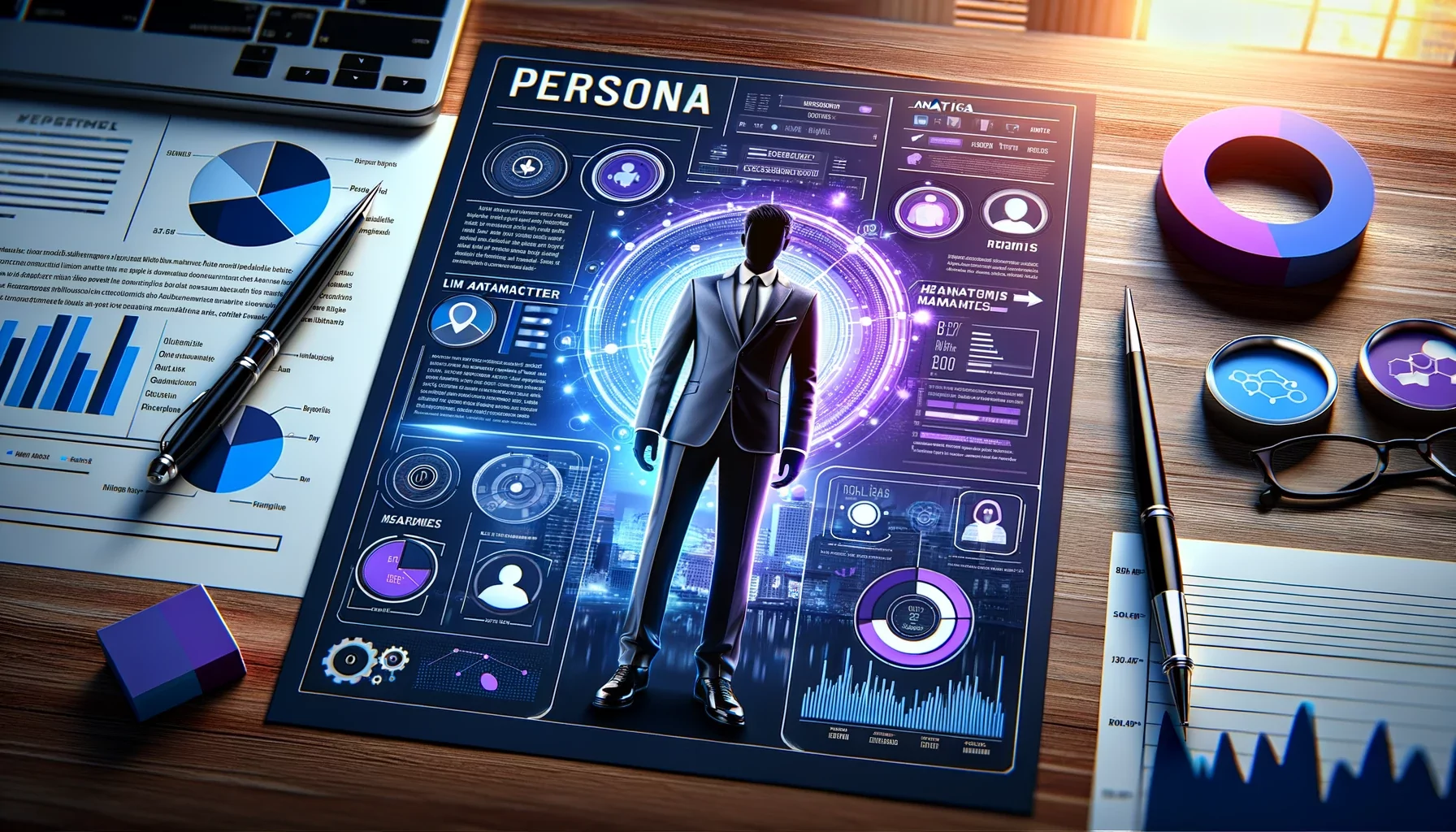Ideal Customer Profile vs Buyer Persona

Ideal customer profile or buyer persona? Find out how they’re similar yet different
Ideal customer profiles and buyer personas are essential staples for sales and marketing teams.
But while both focus on capturing and breaking down your target audience, they fill different roles in your sales process and marketing strategy.
Here’s a closer look at each tool, as well as their similarities and differences.
What is an ideal customer profile?
An ideal customer profile (ICP) is a detailed description of the type of organization most likely to benefit from your product or service.
An ICP serves as a roadmap for sales professionals and marketing teams, guiding them to better understand target audiences and focus their efforts on high-value prospects.
For example, if your product is intended for large corporations, the ICP clarifies the target employee count and budget that meets your requirements. This helps you narrow your efforts and prevent smaller companies from creeping in and burning resources.
An ICP typically includes the following characteristics:
- Firmographics (company size, industry, geography, budget, revenue, etc.)
- Behaviors (purchase frequency, average order value, preferred communication channels, decision-making process, etc.)
- Organization-level needs and challenges (expanding to a new market, restructuring, cost-cutting, etc.)
Ultimately, an ICP outlines an entire organization and its buying process, not an individual.
This is important to keep in mind if you’re operating primarily as a B2B service.
However, the same can’t be said 100% for buyer personas.
What is a buyer persona?
In contrast to an ICP, a buyer persona describes a person in detail. Specifically, it’s a fictional, data-driven representation of someone who works are your ideal customer (i.e. company).
A buyer persona typically includes the following:
- Target demographics (age, location, position, income level, etc.)
- Behaviors (preferred social media, brand loyalty/switching intentions, decision-making process)
- Purchase motivation
- Needs, pain points, and common objections you can expect
Both ICPs and buyer personas are tools that help you concentrate your business activities on prospects and leads who are most likely to become happy customers.
But that’s not the only thing they have in common.
Similarities between ICPs and buyer personas
There are several characteristics that ICPs and buyer personas share.
This overlap is another big reason why many tend to use both terms interchangeably.
Customer-centric
ICPs and buyer personas give insight into your ideal buyers, their needs, and their pains. By identifying and highlighting buyer traits and behaviors, your teams are better positioned to tailor inbound and outbound marketing strategies to address what your target customers are looking for, as well as work around common sales objections.
This laser focus does have a major drawback – In essence, both ICPs and buyer personas are simplified, generalized descriptions that are unable to reflect the diversity of real customers for your target market.
As a result, not all of your prospects of even current customers will match your ideal sales persona, but if you create a robust, accurate persona, many will. You can also mitigate this over-generalization by designing several personas for specific segments.
Data-driven
ICPs and buyer personas use real data to model potential customers. That means the more you know about your customers, the more accurate and effective your persona.
At the same time, developing an ICP and buyer persona can prove tricky if you’re a startup without actual customers.
Fortunately, you can satisfy the data dependency requirement by turning to industry-wide or competitor research to see who’s buying products or services similar to yours. Then, once you’ve sold your product and gained several customers, you can start fine-tuning your personas to match your customers.
Common goals
Both ICPs and buyer personas serve the same overall purpose – To improve and fine-tune your sales and marketing strategies, inform your product development, and drive your business model.
They serve as tools that put sales reps in a better position to achieve more conversions, shorter sales cycles, and increased revenue.
Differences between ICPs and buyer personas
Generally speaking, the biggest difference between an ICP and a buyer persona is that an ICP describes an organization while a buyer persona describes an individual.
Organization vs human focus
An ICP is company-centric. It defines the characteristics of a company that’s most likely to become your customer. An ICP won’t normally describe the characteristics of individual decision-makers within an organization. Instead, it focuses on features like company size, industry, location, and revenue.
Unlike an ICP, a buyer persona is person-centric. It focuses on individual buyers or decision-makers within a company. While ICPs include organizational needs (e.g., a company needs a particular kind of tool to comply with new legislation), buyer personas dive into personal needs, preferences, common sales objections, or pain points of specific potential clients. For example, an individual accountant looking for user-friendly software to streamline payroll operations has different needs from a large accounting firm.
There are occasions when they might be one and the same, such as single-member startups. In such cases, your startup ICP may be almost identical to the startup persona.
In most situations, sales professionals use an ICP to describe the organization you want to target, then you’d create personas for each type of individual you want to target at the company.
Prospecting vs personalization
Sales teams use an ICP to simplify prospecting and identify the right organizations to approach so that resources are used efficiently. The closer a company reflects your ICP, the higher the probability they’ll be interested in your product as a potential client. For this reason, accurate ICPs are particularly important in B2B sales and marketing.
On the other hand, buyer personas are more useful for personalization and relationship building than prospecting. While an ICP tells you what (“What kind of content — such as a demo, white paper, or landing page — should we create?”), a buyer persona tells you who you should write it for and the specific content to include. For example, a guide for startup founders will have a more informal and laid-back tone than a guide for corporate executives.
Account vs buyer targeting
Since ICPs provide guidance for which companies to approach, they’re ideal for account-level targeting. At the same time, buyer personas enable buyer-level targeting.
C-suite officers, department heads, and product teams at the same company all have different needs and considerations, which means you’ll need a separate buyer persona for each one. But since they’re at the same company, the ICP will be the same.
These differences are what make both ICPs and buyer personas highly valuable tools for your business activities. ICPs enable quick lead qualification, while buyer personas come in handy for fine-tuning and personalizing your sales tactics.
FAQ
Do I need both an ICP and a buyer persona?
The short answer is “Most likely yes.”
ICPs and buyer personas are your essential sales tools that play a key role in boosting and honing your sales and marketing strategies while enabling more efficient spend of your resources. Knowing exactly who you sell to on multiple levels helps build better and longer business relationships. They also make it easier to identify lookalike audiences to engage.
Even though creating ICPs and buyer personas can be somewhat time and energy-intensive, the payoff is well worth it, particularly if you use marketing AI to help you out.
When should I use an ideal customer profile instead of a buyer persona?
Use an ideal customer profile when you’re looking at the big picture, like the kind of companies you want to target. Buyer personas are more about the individual people at those companies. Think of it as knowing the right place to go to with the ideal customer profile, and then knowing who to contact once you’re there with the buyer persona.
When should I use a buyer persona instead of an ideal customer profile?
Use a buyer persona when you already know where your customers work and you want to reach out to them, or when you’re mostly selling to individuals.
What are the key mistakes to avoid when creating ICPs and buyer personas?
The first issue is over-relying on assumptions and guesswork. Instead, it’s better to stick to real data whenever possible, as well as analyze current client data.
The second is being too vague. The more specific your persona or ICP, the better.
The third issue is the tendency to create the ICP or persona, then forget about them. For better performance, you need to update the documents as you gain more information.
What KPIs should I use to measure the effectiveness of my ICPs and buyer personas?
Look at your conversion rates, customer acquisition costs, and customer lifetime value. These numbers will tell you if you’re hitting the mark or need to tweak your game plan.











